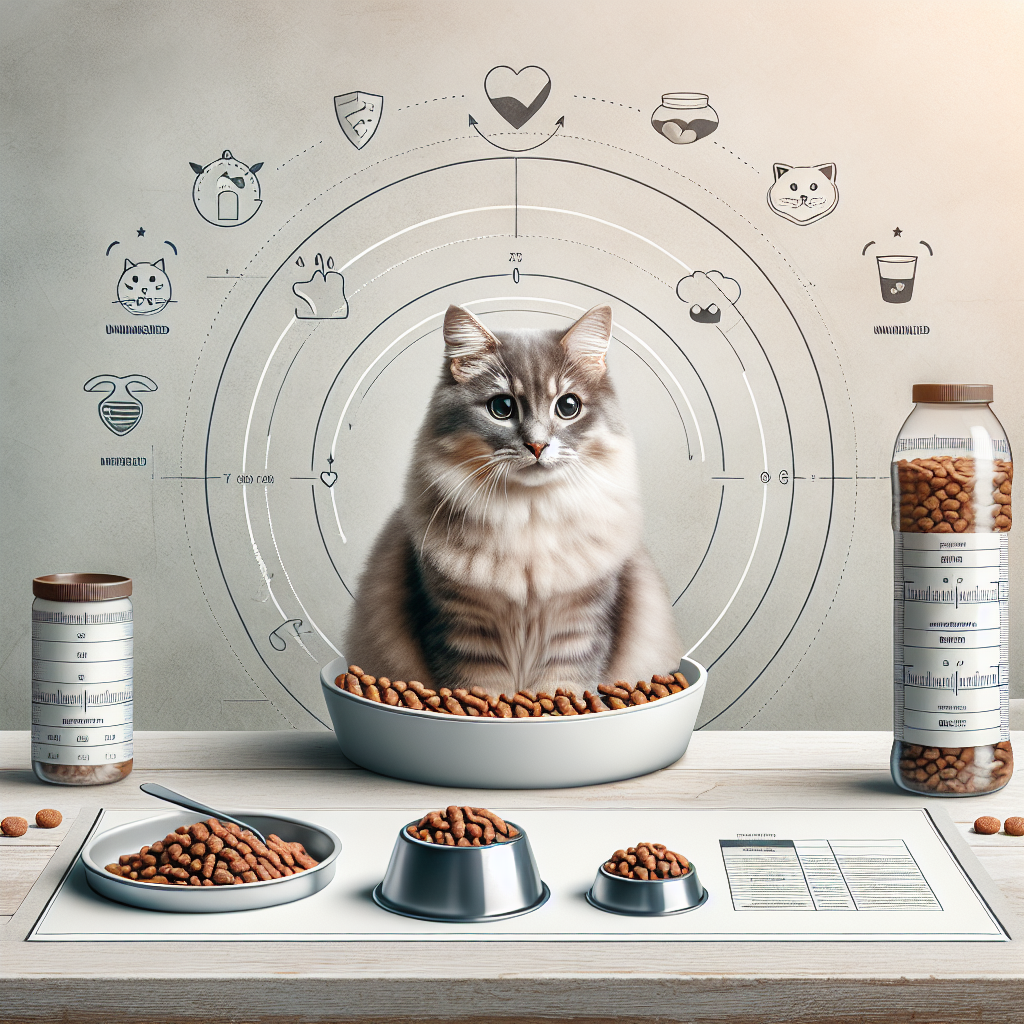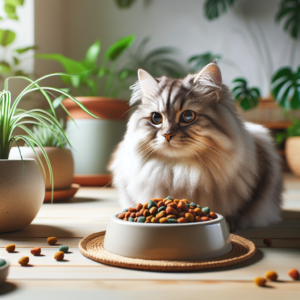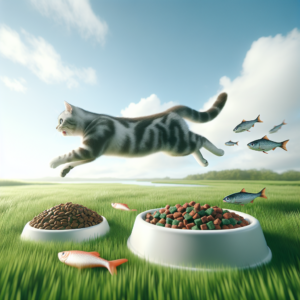
Caring for a cat involves more than just providing a roof over their head and a warm lap to curl up on. One of the key responsibilities of any cat owner is ensuring their feline friend is well-fed with a balanced diet that supports their health and longevity. This article delves deep into the intricacies of cat feeding, focusing on portion control and nutritional needs to help your cat thrive.
Understanding a Cat’s Nutritional Needs
Cats are obligate carnivores, which means their diet should primarily consist of meat. Unlike dogs and humans, cats have specific dietary requirements that are centered around proteins and fats rather than carbohydrates. Key nutrients include:
- Protein: Essential for growth, maintenance, and energy. Cats need high-quality animal-based proteins.
- Taurine: An amino acid crucial for heart health, vision, and reproduction, which cats cannot synthesize in sufficient quantities.
- Arachidonic Acid: A fatty acid necessary for skin health, kidney function, and reproduction.
- Vitamins: Vitamins A and D from animal sources, as cats cannot convert plant-based precursors efficiently.
- Minerals: Essential minerals such as calcium and phosphorus must be in balance to support bone health and other physiological functions.
Factors Influencing Portion Size
Determining the right portion size for your cat is not a one-size-fits-all approach. Several factors should be considered:
Age and Life Stage
Kittens, adults, and senior cats have different dietary needs. Kittens require more calories and nutrients to support their rapid growth, while adult cats need balanced maintenance diets. Senior cats may need fewer calories but more easily digestible nutrients, depending on their health status.
Activity Level
Active cats that play frequently or have outdoor access may require more calories than sedentary indoor cats to maintain a healthy weight.
Health Conditions
Cats with certain health issues such as obesity, diabetes, or kidney disease may require tailored diets. It’s essential to consult with a veterinarian to adjust feeding plans accordingly.
Breed and Size
Some breeds, like the Maine Coon, are naturally larger and have different metabolic rates compared to smaller breeds, affecting their portion sizes.
Calculating the Right Portion
To determine the appropriate portion size, you need to consider the caloric content of the food and the daily caloric needs of your cat. Here’s a basic guide to help you get started:
1. Determine Caloric Needs
The average adult cat requires about 20 calories per pound of body weight daily. For example, a 10-pound cat may need about 200 calories per day. This can vary based on the factors mentioned above.
2. Check Food Labels
Commercial cat food labels provide information on the caloric content per serving. Use this information to calculate how much to feed your cat per day. For wet food, this is usually listed per can or pouch, while dry food is listed per cup.
3. Adjust Based on Observations
Monitor your cat’s weight and body condition. If your cat is gaining or losing weight, adjust the portions accordingly. A healthy cat should have a visible waistline and ribs that can be felt but not seen prominently.
Feeding Schedule and Routine
Establishing a regular feeding schedule helps maintain your cat’s digestive health and can prevent overeating. Here are some tips:
Choose Meal Frequency
Cats typically benefit from being fed multiple small meals throughout the day. Two to four meals per day are ideal, but this can be adjusted based on your schedule and your cat’s preferences.
Consistency is Key
Feeding your cat at the same times each day can create a sense of routine and security. It can also help regulate their metabolism and energy levels.
Monitor Feeding
Observe your cat during mealtimes and remove uneaten food after a set period (e.g., 30 minutes). This prevents overeating and helps you track their appetite, which can be an early indicator of health issues.
Wet vs. Dry Food: Making the Choice
Both wet and dry cat food have their pros and cons, and the choice often depends on individual cat preferences and health needs.
Wet Food Benefits
- Higher moisture content aids in hydration, particularly beneficial for cats with urinary tract issues.
- Often has higher protein content and fewer carbohydrates.
- Some cats find it more palatable and easier to eat, especially older cats with dental problems.
Dry Food Benefits
- Convenient for free-feeding and can be left out longer without spoiling.
- May help with dental health by reducing plaque and tartar buildup.
- Usually more cost-effective than wet food.
Many cat owners choose to offer a combination of both to balance benefits and preferences.
Transitioning to a New Diet
When introducing a new food or altering portion sizes, do so gradually to prevent digestive upset. Follow these steps:
Gradual Introduction
Mix a small amount of the new food with the old, gradually increasing the new food’s proportion over 7-10 days.
Monitor Reactions
Watch for signs of digestive issues such as vomiting, diarrhea, or a lack of appetite. If these occur, slow down the transition or consult your veterinarian.
Conclusion
Feeding your cat the right portions of a balanced diet is crucial for their health and well-being. By understanding their unique nutritional needs and adjusting their portions based on various factors, you can help ensure they lead a healthy, happy life. Regular consultations with your veterinarian can provide additional guidance tailored to your cat’s specific needs, ensuring that your feline friend thrives at every life stage.







